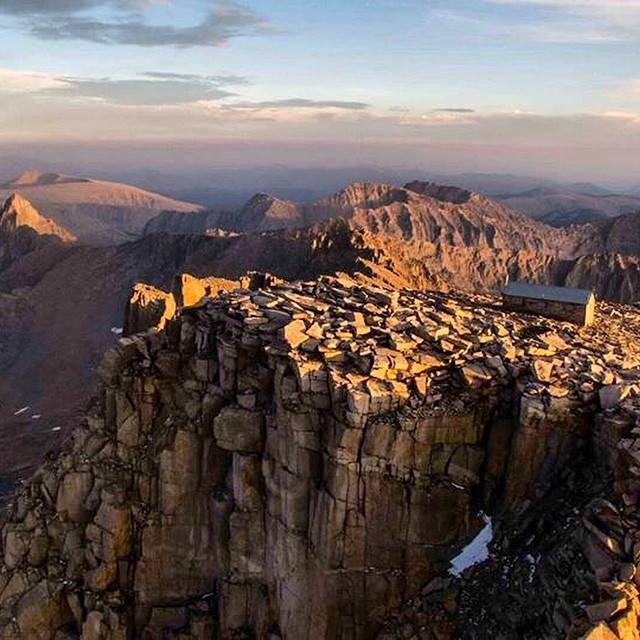On top of Mt. WhitneyMt. Whitney, the highest peak in the Sierra Nevada Mountain Range, appears in t
On top of Mt. WhitneyMt. Whitney, the highest peak in the Sierra Nevada Mountain Range, appears in this spectacular photo from the US National Park Service.Mt. Whitney is the remnant of a giant magmatic body produced about 80 million years ago. At the time, an oceanic plate called the Farallon plate was sinking beneath the state of California and the U.S. West Coast. As this plate entered the mantle and was heated, water and other fluids trapped in it were released. They migrated upward, causing the hot mantle rocks above to melt.Those magmas migrated upward into the crust, building a classic volcanic arc. At some places in the Sierra Nevada, rocks that erupted at Earth’s surface are still preserved, but in the southern part of the mountains, the deep roots of the magma system are exposed.The Mt. Whitney Pluton is a granodiorite; not quite as silica rich as a granite but still a fairly common rock type from subduction zones. Mt. Whitney is the remnant of a giant magma chamber, a magma body over 50 kilometers long. It likely fed hundreds of volcanic eruptions when it was active. Today it is a giant piece of rock with tightly interlocking crystals, a product of slow cooling within the crust. The fractures you see that define the shape are called joints: fractures that tend to open in rocks when they come up to the surface and pressure on them is released.Mt. Whitney is named for California’s first state geologist, Josiah Dwight Whitney.-JBBImage credit: http://instagram.com/usinteriorRead more:http://www.unh.edu/esci/geology-highpoints/california.htmlhttp://gsabulletin.gsapubs.org/content/119/9-10/1185/F2.large.jpg -- source link
Tumblr Blog : the-earth-story.com
#granite#geology#mt whitney#science#nature#sierra nevada#california#igneous#pluton
